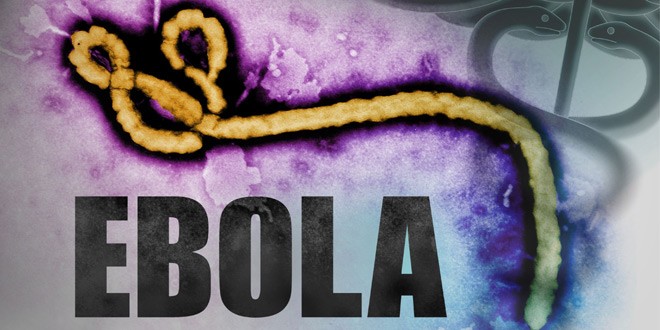Ebola Virus outbreak has caused a lot of panic among the world nations. In this article we attempt to discuss about Ebola virus, its causes, its possible symptoms.
However, we advise you to consult with a doctor for knowing the exact procedures and treatment if you suspect the illness is in your locality.
Ebola virus disease – What is it?
Ebola virus disease (EVD) or Ebola hemorrhagic fever (EHF) is the human disease caused by the ebola virus.
EVD first appeared in 1976 when two outbreaks (one in an area near the Ebola River in Democratic Republic of Congo, and the other in South Sudan) occurred. Since then, sporadic outbreaks have occurred, most commonly in the Democratic Republic of Congo, Uganda, South Sudan, Congo and Gabon.
The origin of Ebola virus is not known, but fruit bats are thought to be the likely host of the virus.
How do people become infected with Ebola virus?
Ebola virus is transmitted to humans through direct contact with the blood, secretions, organs or other bodily fluids of infected animals (which include chimpanzees, gorillas, bats, monkeys, forest antelope and porcupines). This occurs when hunters/other persons come into contact with dead animals found lying in the rainforest, or handling raw meat of infected animals.
Once a person is infected, the Ebola virus can spread to other people in the community.
Less commonly, infection can also occur from direct contact (through broken skin or mucous membranes, including the nose, eyes and mouth) with environments that are contaminated with an Ebola patient’s infectious blood or body fluids, such as soiled clothing, bed linen, or used needles.
What are the signs and symptoms of EVD?
Symptoms typically start two days to three weeks after contracting the virus, with a fever, throat and muscle pains, and headaches. This is followed by vomiting, diarrhoea, abdominal pain, and sometimes a rash. Some patients may experience bleeding inside and outside of the body; this is the most serious complication.
What is the treatment of EVD?
There is no medication available to treat the Ebola virus itself. Standard treatment for EVD is limited to supportive therapy, and severely ill patients require intensive supportive care. This consists of balancing the patient’s fluids and electrolytes, maintaining their oxygen status and blood pressure, and treating them early for any complicating infections.Some patients will recover with the appropriate medical care.
To control further spread of Ebola virus, patients that are suspected to have EVD should be isolated from other patients and treated by healthcare workers using very strict precautions to prevent being infected.
Experimental treatment has been tested in animal models, but has not yet been used in humans.
How can it be prevented?
Prevention includes decreasing the spread of the disease from infected monkeys and pigs to humans. This may be done by checking these types of animals for infection and killing and properly disposing of the bodies if the disease is discovered. Properly cooking meat and wearing protective clothing when handling meat may also be helpful, as is wearing protective clothing and washing hands when around a person who has the disease. Samples of bodily fluids and tissues from people with the disease should be handled with special caution.
We would again stress you to have a consultation with your local doctor on the diagnosis and treatment of the Ebola Virus. This article merely highlights the readers about the Ebola Virus for education purpose.
 Thfire.com Everyday news that matters
Thfire.com Everyday news that matters 
